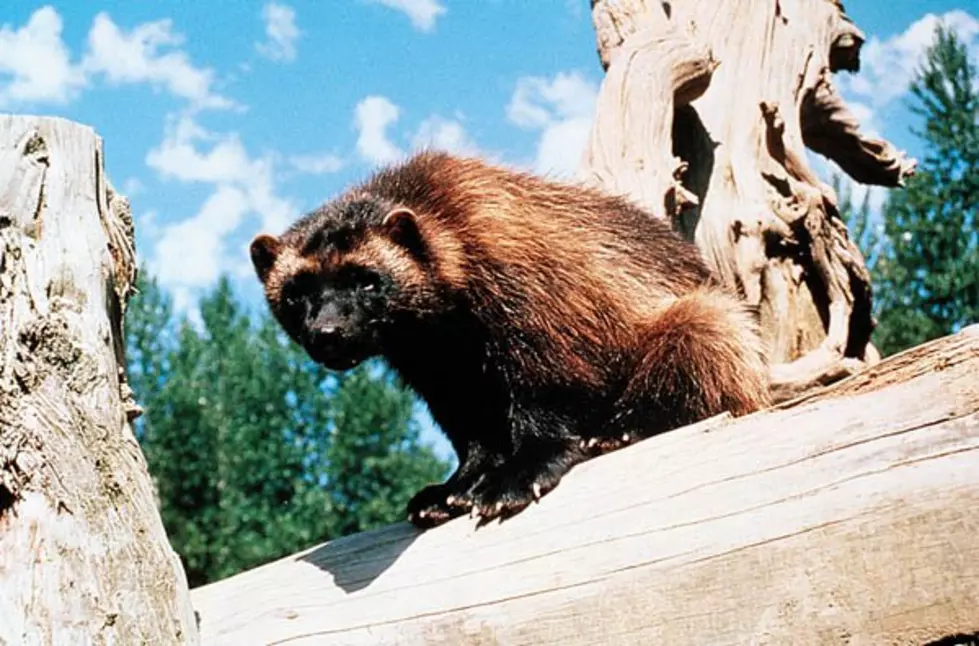
Missoula District Court: Feds have 2 months to consider wolverine listing as climate warms
As the effects of climate change continue to intensify, the U.S. Fish and Wildlife Service must finally decide if a warming climate threatens wolverine survival enough to require listing the species as threatened, according to a court settlement.
The U.S. Fish and Wildlife Service this month agreed to decide by the end of August whether wolverines in the lower 48 states should be listed under the Endangered Species Act. The agreement, filed in Missoula federal district court, is the result of numerous conservation groups suing the USFWS in March for failing to carry out a judge’s 2016 order to finalize a ruling “at the earliest possible, defensible moment in time,” stressing “that time is now.”
The nine conservation groups included the Center for Biological Diversity, Conservation Northwest, Defenders of Wildlife, Friends of the Clearwater, Greater Yellowstone Coalition, Idaho Conservation League, Jackson Hole Conservation Alliance, Klamath-Siskiyou Wildlands Center and Rocky Mountain Wild.
“Climate change and habitat fragmentation are pushing wolverines to the brink,” said Jonathan Proctor, Defenders of Wildlife Rockies and Plains program director, in a statement. “The Fish and Wildlife Service has a moral and legal obligation to protect these animals, and we are here to ensure it performs its duty without further delay.”
It’s already been 20 years since the Biodiversity Legal Foundation and five other organizations first petitioned to have the wolverine listed because of habitat loss and unregulated trapping in the past. Three years later, the USFWS ruled the petition wasn’t substantial because not enough was known about wolverine distribution and possible threats.
A series of lawsuits has followed, with the USFWS either losing or settling each suit and then being accused of delays or poor rationale for its decisions. For the wolverine, protection has become a matter of court orders, said Earthjustice attorney Tim Preso.
“That was the whole point of filing the (March) lawsuit. It seems like we’ve gotten to the point where the only way you can get them to do anything is if there’s a court order attached to it,” Preso said. “The common theme has been that the service has tried every delay or obstruction tactic that they can come up with and we’ve had to go back to the court multiple times for enforcement of the law.”
Finally, in December 2010, after a few more rounds of study and public comment, the agency decided that the wolverine was threatened, this time by climate change. But USFWS managers said the effects weren’t yet bad enough to require a listing, especially since the agency had hundreds of other candidate species it needed to assess for listing.
With federal budget cuts after the 2008 recession, federal biologists were struggling to find enough resources to study candidate species, and those delays were prompting other lawsuits.
However, USFWS biologists in Montana were able to find evidence that things were worsening for the wolverine quicker than anticipated. So in 2013, they proposed listing the wolverine as threatened, only to be overruled by their regional managers in Denver, Colo. In mid-2014, USFWS Director Dan Ashe said he accepted Mountain-Prairie Regional Director Noreen Walsh’s recommendation not to list the wolverine.
Again, about a dozen environmental groups sued, including the nine who sued in March. In 2016, Missoula federal district Judge Dana Christensen sided with them, even though many had sided with the USFWS, including several snowmobile clubs, the states of Montana and Wyoming, Montana Fish, Wildlife & Parks and the Montana Petroleum Association.
Christensen ordered the USFWS to consider the fact that declining spring snowpack could limit wolverine denning sites and thus affect reproductive success, which could threaten a species that already has a small population size.
Wolverines, like grizzly bears, are difficult to count. But biologists estimate that fewer than 300 wolverines remain in the Northern Cascade and Rocky Mountains.
“No greater level of certainty is needed to see the writing on the wall for this snow-dependent species standing squarely in the path of global climate change. It has taken us twenty years to get to this point,” Christensen wrote in 2016.
But while the environmental groups have waited, the USFWS hasn’t produced any studies or rulings since 2016, even though their own action plans set deadlines to deal with the ruling.
“We didn’t want to just go running back to court, recognizing they’ve got other species they’re dealing with. It was sort of ‘Let’s see if they’ll take the action on their own,’” Preso said. “Then after four years went by, and they had blown through one deadline after another that they had set for themselves, we began to be concerned that they weren’t going to do this. At some point, there’s no substantive difference between failing to take action on a listing and making a negative determination on a listing – there’s still no listing.”
Now, the USFWS has two months to produce a ruling. The environmental groups are hopeful that the wolverine will finally be protected but after 20 years, they know better than to count on it.
The Trump administration has stated that it prioritizes natural resource extraction over wildlife or ecosystem functions and has made a point of tearing down environmental protections. So Interior Secretary Bernhardt and USFWS director Aurelia Skipwith may not support a listing decision.
“It’s always hard to predict, but I think the court order was very clear, that wolverines need protection,” said Andrea Zaccardi for the Center for Biological Diversity. “So I think for them to come out with a negative decision would be risky on their part. But I can’t say that I’m overly optimistic.”
Contact reporter Laura Lundquist at lundquist@missoulacurrent.com.
